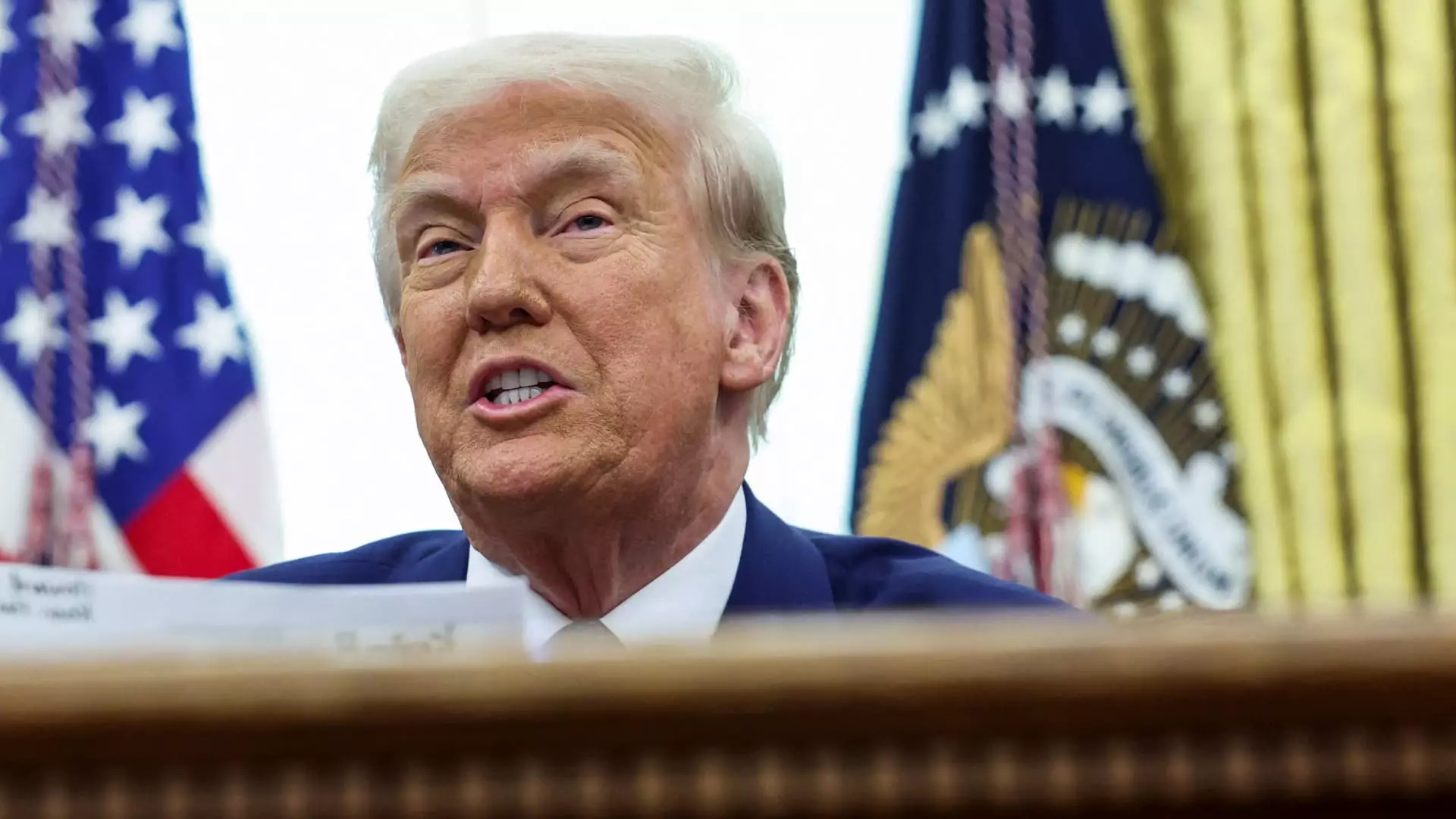Recent developments in U.S. defense spending have generated significant turbulence in the stock market, particularly among defense contractors. The catalyst for this sharp decline in stock prices can be traced back to President Donald Trump’s remarks on the potential for substantial cuts in military expenditure. Speaking at the White House, Trump proclaimed that under certain conditions, the U.S. could see its defense budget slashed by up to 50% in the future. The timing of these comments raised eyebrows, especially as they emerged during discussions surrounding an upcoming summit on defense strategies involving major global powers like China and Russia.
Trump articulated his belief that a massive defense budget—which currently hovers around $1 trillion—could be redirected towards more pressing domestic needs. “When we straighten it all out,” he stated, indicating a desire to negotiate spending reductions with President Xi Jinping and President Vladimir Putin, suggesting that such discussions could lead to practical solutions in an increasingly strained geopolitical landscape. This dramatic shift in rhetoric set off alarm bells in the investment community, leading to notable declines in the stock prices of major defense contractors. For instance, Lockheed Martin, Northrop Grumman, and General Dynamics saw significant losses of 1.3%, 2.6%, and 2.1%, respectively.
Mixed Signals from the Administration
What complicates this picture is the mixed messaging emanating from Trump’s administration regarding military funding. On one hand, the president has actively sought cost-cutting measures across government sectors, collaborating with figures like Elon Musk in the Department of Government Efficiency. At the same time, however, he has emphasized the necessity of maintaining a robust military presence globally, underscoring the U.S.’s leadership role. Trump’s past actions—such as expediting military support for Ukraine—suggest a commitment to maintaining military readiness even as he expresses a desire for spending reductions.
Investor sentiment appears to be reflecting the inherent contradictions present at the executive level. The defense sector’s reaction to Trump’s statements illustrates a broader uncertainty that is affecting decisions and strategies among defense contractors. Analysts, including Roman Schweizer from TD Cowen, pinpoint this confusion, highlighting that current and potential fiscal policies are creating a complex landscape that industry stakeholders must navigate carefully.
Looking Ahead: A Crucial Balancing Act
As we move towards a potential negotiation era with global rivals, the U.S. defense posture remains a crucial focus. The projected changes in defense spending and the ongoing discussions with world leaders will be instrumental in shaping America’s military strategy for the foreseeable future. The balancing act between reducing financial commitments and retaining military strength is fraught with challenges. Stakeholders must dissect the nuances of the president’s comments, as they could inform not only market strategies but also geopolitical alliances and defense capabilities.
Ultimately, the defense industry is at a crossroads. Navigating these tumultuous waters will require astute analysis and flexibility to adapt to a potentially new hierarchy of U.S. defense priorities in the age of Trump.

